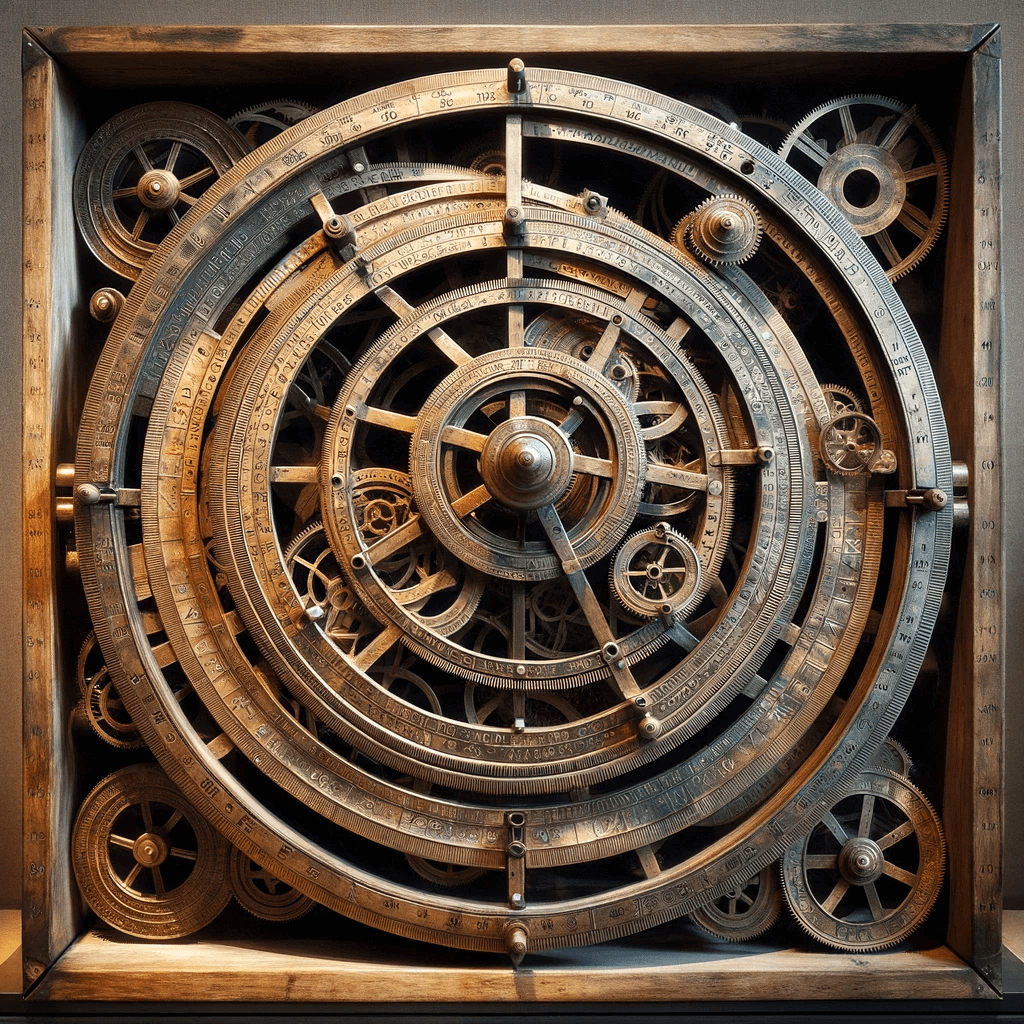The Antikythera Mechanism
ANCIENT GREEK ASTROLOGY CALCULATOR
13 December 2023
What is the Antikythera Mechanism?

The Antikythera Mechanism, an ancient artifact discovered in a shipwreck near the Greek island of Antikythera in 1901, has baffled historians, archaeologists, and astrologers alike for over a century. This intricate device, often hailed as the world’s first analog computer, was used to predict astronomical positions and eclipses decades in advance.
Scientists believe the device is of Ancient Greek origin dating from around 100 to 250 BC. Despite its age, the Mechanism's complexity is astounding, featuring a sophisticated system of gears and dials. It's a testament to the advanced technological and astrological knowledge of our ancestors.
The Mechanism's primary function was to track the cycles of the Solar System. It could also predict the dates of the ancient Olympic Games. The device's complexity and precision are remarkable, considering it was created over 2,000 years ago.
Recent studies have revealed that the Mechanism was likely used for astrological purposes, providing further insight into the role of astrology in ancient Greek society. Despite the Mechanism's age and the corrosion it has suffered over the centuries, modern X-ray technology has allowed researchers to study its inner workings. This has led to a greater understanding of the Mechanism's functions and the astrological knowledge of the ancient Greeks.
How Was Antikythera Used?

The Antikythera Mechanism's astrological significance lies in its ability to track the movement of celestial bodies. The device could accurately predict the positions of the Sun, Moon, and possibly the five visible planets: Mercury, Venus, Mars, Jupiter, and Saturn.
By turning a hand crank, the user could set the Mechanism to a specific date. The device would then show the positions of the celestial bodies on that date. This allowed ancient astrologers to cast detailed horoscopes, even for future dates.
The Mechanism also featured a dial that predicted lunar and solar eclipses, including the color of the eclipse, which was believed to carry astrological significance. The ability to predict eclipses was highly valued in ancient societies, as these events were often seen as omens.
Another dial on the Mechanism tracked the four-year cycle of the Olympic Games, which were closely linked to celestial cycles. This further illustrates the strong connection between astrology and society in ancient Greece.
The Antikythera Mechanism's ability to accurately predict celestial events demonstrates the advanced astrological knowledge of the ancient Greeks. It also shows that astrology played a significant role in their daily lives, influencing everything from religious rituals to the timing of the Olympic Games.
How Did Antikythera Function?

Decoding the Antikythera Mechanism has been a monumental task for researchers. The device is made up of numerous interlocking gears, each carefully calibrated to represent the motion of a particular celestial body. The largest gear, for example, represents the movement of the Moon, with 223 teeth corresponding to the Moon's Metonic cycle of approximately 19 years.
Other gears represent the cycles of the Sun and the five visible planets. By turning the hand crank, these gears would move in relation to one another, accurately representing the movement of the celestial bodies through the sky.
Despite the Mechanism's complexity, researchers have been able to reconstruct much of its functionality using modern technology. X-ray imaging has revealed the inner workings of the device, allowing researchers to study its gears and dials in detail. Computer models have also been used to simulate the Mechanism's operation, providing further insight into its functions.
Through these efforts, researchers have decoded much of the Antikythera Mechanism's functionality. However, many questions remain. For example, it is still unclear who built the Mechanism and how they obtained the advanced knowledge necessary to construct such a device.
Despite these lingering mysteries, the Antikythera Mechanism remains a remarkable artifact. It provides a fascinating glimpse into the advanced astrological knowledge of the ancient Greeks and the important role that astrology played in their society.
What do we know about The Antikythera Mechanism?

The Antikythera Mechanism is a testament to the advanced astrological knowledge of the ancient Greeks. Its intricate gears and dials allowed them to predict celestial events with remarkable accuracy, influencing everything from religious rituals to the timing of the Olympic Games.
While much of the Mechanism's functionality has been decoded, many mysteries remain. Who built the Mechanism? How did they obtain the knowledge necessary to construct such a device? These questions continue to fascinate researchers, and the Antikythera Mechanism remains a subject of ongoing study.
Despite these unanswered questions, the Antikythera Mechanism is a remarkable artifact. It provides a unique insight into the role of astrology in ancient Greek society and the advanced astrological knowledge of our ancestors.
As we continue to study this ancient celestial calculator, we gain a deeper understanding of the roots of astrology and the significant role it has played in human history.